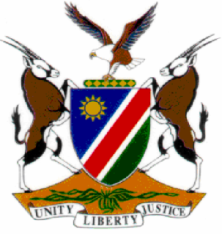
CASE NO.: CR 32/2011
IN THE HIGH COURT OF NAMIBIA
HELD IN OSHAKATI
In the matter between:
THE STATE
versus
GEORGE EPAFRAS
(HIGH COURT REVIEW CASE NO.: 224/2010)
CORAM: Liebenberg J et Tommasi, J
DELIVERED ON: 18 October 2011
REVIEW JUDGMENT
TOMMASI J [1] The matter came before me on automatic review. The accused was charged with attempted rape alternatively indecent assault and in the second alternative, assault with intent to do grievous bodily harm. The accused pleaded not guilty to the main and alternative counts and did not disclose the basis of his defense. He was discharged in terms of section 1741 on the main count and convicted on both the first and second alternative counts.
[2] I directed a query to the magistrate requesting reasons for his decision to convict the accused on both the alternative counts and the following was his response:
“The accused was charged with one count of attempted rape with two alternatives, i.e. indecent assault and assault with intent to do grievous bodily harm.
On conviction he was convicted on all two alternative charges. However, this was done through human era (sic)”
[3] The complainant in this matter testified that on 1 August 2006 at around 7 in the morning while she was walking on a gravel road in Tsumeb, she saw the accused in the company of friends. He had a balaclava in his hand. She did not know him personally prior to this date but had seen him in the streets. When she noticed the accused and his friends, she took a different route. The accused came from behind; slapped her; threw her down on the ground and said that he wanted to sleep with her. His zip was open and his belt unfastened and he was wearing the balaclava and sunglasses. She informed him that she was HIV positive. He then put his fingers into her vagina. He stabbed her with a (broken) bottle on her shoulder. She was wearing a jacket at the time which afforded her some protection. She did not sustain a wound which required stitches on her shoulder. She jumped up and the accused grabbed her legs and dragged her towards the tar road. He kicked her on her feet and her ribs. She was screaming but nobody responded although there were people in the vicinity.
[4] She testified that she had a clear view of his face when he was in the company of his friends and afterwards when he let go of her as he rolled the balaclava off his face. She reported the matter to the police and was examined by a medical doctor. The medical report was handed into evidence without any objection by the accused. The only notable injuries recorded therein were the swelling and lacerations on the victims left leg. The accused was not apprehended and the complainant was asked to contact the police if she happens to see the accused again. She saw the accused approximately a year after the incident and reported this to the police. She accompanied the police to the place where she had seen the accused, and pointed him out amongst a large group of people. The accused ran away when he spotted the police but was later arrested. The accused did not dispute the complainant’s version of the incident. He testified that he was in Grootfontein on the date of the incident. The magistrate was satisfied that it was the accused who committed the offence and rejected his evidence as false.
[5] The evidence of the complainant, which was not disputed by the accused, justified a conviction of rape. I fail to understand why the accused was not charged with rape or why the accused was discharged in terms of section 1742 on the main count of attempted rape. Rape as defined in terms of the provisions of the Combating of Rape Act3 would include the insertion of fingers into the vagina of the complainant if perpetrated under coercive circumstances which were clearly present in this case.
[6] The charge of indecent assault and assault with the intention to do grievous bodily harm were both alternatives to the main count and the magistrate correctly conceded that he could not have convicted the accused on both. The accused was not charged with two separate counts but with one main and two alternative counts. The conviction can only be in respect of one of the two alternative counts. The proven facts herein support a conviction on the first alternative. The magistrate took both the offences together for the purpose of sentence. The irregularity that occurred with the conviction affected the sentence which was imposed and it therefore cannot be allowed to stand.
[7] The magistrate correctly concluded that a custodial sentence is warranted. The offence is serious and the accompanying assault perpetrated on the complainant justifies a custodial sentence.
[8] In the result the following order is made:
The conviction on indecent assault is confirmed;
The conviction on assault with the intent to do grievous bodily harm is set aside.
The sentence is set aside and substituted with a sentence of 3 years imprisonment.
The sentence is antedated to 17 October 2010.
____________________________
Tommasi J
I agree
____________________________
Liebenberg J
1 of the Criminal Procedure Act, 51 of 1977
2of the Criminal Procedure Act, 51 of 1977
3